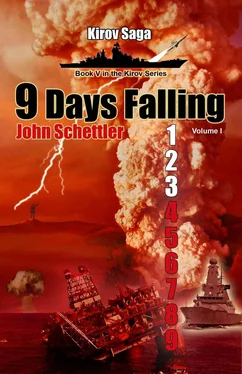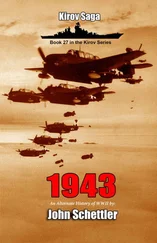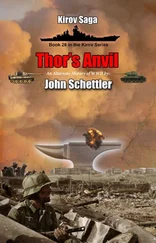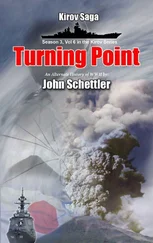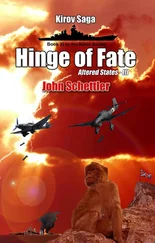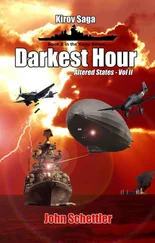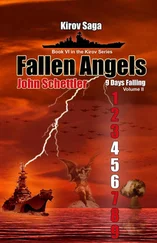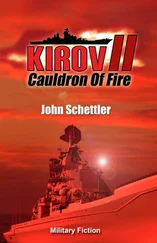The US intelligence was so good that they even intercepted the North Korean signal ordering the second missile fired. When it roared to life, its hot exhaust tail red with fire as it rose from the launch site to break through the thin cloud layer above, YAL-1 was waiting in ambush in the skies above Japan. It was orbiting at an altitude of 45,000 feet in a typical ‘racetrack’ pattern, a specially modified jumbo jet, the 747-400F.
Infrared sensors on the plane had already detected the launch and were ready to respond as the Musudan missile clawed its way into the sky in its initial boost phase. A low-power targeting and tracking laser was already locking onto the missile as fast computers calculated its trajectory. Concave mirrors pivoted to align the directed energy laser on the target. Turbo-pumps howled at the rear of the plane and blasted a stream of hydrogen peroxide and iodine through metal nozzles, the fuel needed to power the enormous chemical oxygen laser designated COIL. Just as the Musudan missile began its initial boost, a million watts of lethal energy lanced out from the nose of the 747 and crossed the distance of a little over 500 kilometers at the speed of light. They would paint the target with an invisible high energy beam that literally cooked the fuel in the first stage and the resulting increase in internal pressure caused it to explode. General Lane was going to notch his belt once again that morning, satisfied that he had put this upstart hothead Reed in his place once and for all.
“Now then,” he leaned forward when the news of a successful kill came through, steepling his fingertips in satisfaction. “Let’s get the B-2s up from Anderson and let the WaveRiders take out the rest of their launch facilities while we do the Chinese. Any objections?”
No one said anything.
CaptainVladimir Karpov considered his tactical situation and the tentative contract he had negotiated with the Americans as he sat in the Captain’s chair aboard Kirov . It wasn’t signed yet, nothing more than a verbal agreement, a thin understanding he had negotiated with the commander of the nearest American Carrier Strike Group off the coast of Japan to the south. The Americans were justifiably edgy about the sortie of the entire Red Banner Pacific Fleet. So Karpov had decided to “pull a Volsky” and make direct radio contact with his adversary on CVBG Five. They had bandied about with boasts, insults, and veiled warnings to each other for some time, then got down to the subtle business at hand.
“You have your orders. I have mine.” He had told the American Captain Tanner. “You’re here to keep an eye on me. I’m here to keep an eye on you. It’s that simple. We’ve been at it for eighty years, and this is no different. But things do tend to get a little out of hand when this much metal puts to sea.”
The Americans wanted him to stay north of 43 degrees, which he was more than happy to do. At the same time he had advised Tanner that any hint of a strike package heading his way would be answered with missiles, a shoot first and ask questions later policy given the circumstances. The conversation had finished with that agreement in place, tentative as it was.
“I think we understand one another,” Tanner had radioed. “You just remember those 43 degrees. Yes, I’ll chase a few gulls down here. It’s a favorite pastime for a carrier Captain. But I hear the birds up north are pretty sparse.”
It was a subtle way of telling Karpov the Americans had no intention of pressing the issue. Both sides were clearly ‘showing the flag’ and the muscle behind it, but neither Captain wanted this to go any further than it had to.
“Haven’t seen so much as a seagull this morning,” Karpov replied. “And I have also heard the waters south of 43 degrees are a still polluted by that old reactor at Fukujima. Yes, Captain Tanner. I think we do understand one another. I suppose we can only hope that our respective governments can come to a similar understanding. Enjoy your coffee. Karpov out.”
The problem was always those respective governments, thought Karpov. They were the old Greybacks who hovered over maps and projected their greed and desire in thickly worded pronouncements. The United Nations was their forum and great theater in times of high crisis like this. The Chinese had stolen the show when one of their Generals stormed in and brazenly stated that a nuclear exchange was not only contemplated but apparently acceptable if the Americans wanted to try and stop them from forcibly integrating Taiwan with the mainland. His cold logic of war was as stark and simple as possible—you’ll kill us, we’ll kill you, and when the radiated dust settles we’ll have survivors equivalent to your entire current population, and you will be gone. That was war’s grizzly bottom line.
Karpov was doing the same math in his mind that day as he sized up the enemy carrier battlegroups heading his way, ticking off ship names, classes and capabilities in his mind, and working out his battle plan if it came to that. In the end one side or another would still have ships afloat and claim the victory, but the odds looked fairly steep for his Red Banner Pacific Fleet. CVBG Washington was enough to contend with, but he would soon be up against two American Carrier Strike Groups, as CVBG Nimitz was also heading west from Hawaii.
Nikolin interrupted his reverie with a communication from Naval Headquarters at Fokino. It was a plainly coded message, decrypted and printed on screen and teletype as it arrived, and it sent a rising pulse of adrenaline churning in Karpov’s stomach when he read it: SSN Tigr sunk by hostile action in the Gulf Of Mexico. PLAN forces have attacked Taiwan. Stand Ready. Hostilities imminent.”
Hostilities were already well underway, he thought. The Chinese… He shook his head. So it finally came down to missiles and manpower. That was sure to pull in the Americans and everyone else, present company included. Apparently there had also been a shooting incident off the US Coast. Tigr was an improved Akula class boat, and a good one. What was it doing in the Gulf of Mexico? That was one hell of a place to put on the patrol schedule given the present situation there. Then the other news concerning the hurricane and the major damage to the oil platforms began to filter through this latest comm-signal, and he wondered what had really happened in the oil dark waters of the Gulf.
Suppose our Tigr had something to do with the catastrophic collapse and sinking of that big British Petroleum platform? What would have possessed the Americans to simply fire on a Russian sub if it were not up to some very real mischief there in the Gulf Of Mexico?
The Greybacks, he thought. They pulled something out of their fedoras and this is what it came to in the end. Tigr was blown to pieces and sixty-five men were dead in the wreckage at the bottom of the sea.
“What are our friends doing on the Washington , Rodenko,” he asked his radar man. The Americans were too far away to appear on the ship’s organic radar systems, but Volsky had naval air assets up from Vladivostok, a pair of A-50U Shmel long range radar planes 300 kilometers south of his position in the border zone known as the AEW line. Both sides had Airborne Early Warning assets deployed there, and the Russian planes had company in the zone with an E-6 Hawkeye off the Washington , and a larger E-3 Sentry AWACS plane from airfields in Japan. Rodenko was also receiving satellite data from space where Russian spy birds watched with their high resolution cameras and infrared sensors.
“The American carrier is heating up, sir,” said Rodenko. “I’ve seen this before. It looks like they’re spotting for launch—at least two squadrons. If this is so I should have radar return feeds from the A-50s soon for confirmation.”
Читать дальше
